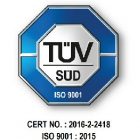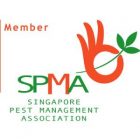Out of all the pests homeowners may face, there are probably none that are as damaging and costly as termites. Statistics show that these pests can cause up to $1 billion in property damage each year.
It’s the reason why it’s crucial to get rid of termites as soon as you confirm an infestation – and the first step to do so is to educate yourself about them. To help you start with, we discuss everything you need to know about termites in your home.
Termites: Why are They a Threat?
Termites feed on wood, which to some degree, forms the foundation of homes. They are also innately stealthy, making it difficult to notice signs of termite activity and because they eat wood from the inside out, termite infestations can go undetected for years.
In most cases, an infestation is noticed only when there’s already significant structural damage within the walls and other wood materials. On such occasions, termites can grow into numbers and expand into colonies.
Types of Termites
There are about 200 species of termites in existence, all of which are grouped into three primary types: subterranean, drywood, and dampwood. Each classification has a different biology and characteristics, determining which type of environment they thrive in as well as how they destroy homes.
Subterranean Termites – As the name suggests, these termites dwell in the soil under and around homes. They prefer warm, humid climates such as that of Singapore, where they tend to build the largest nests among any insect species in the state. Their nests are usually connected to homes or other food sources via mud tubes.
Drywood Termites – Unlike subterranean termites, drywood termites build nests in dry woods such as dead trees, doors, and cabinets. While significantly smaller than their counterparts, they can still cause damage that is equally extensive and widespread.
Dampwood Termites – Dampwood termites, on the other hand, live in wood with high moisture in them. Instead of dwelling in the soil, they feed on damp wood that is either damaged or in direct contact with the ground. This includes stumps, logs, and lumber.
Signs of Infestation
As earlier mentioned, it’s not easy to detect evidence of termites. However, you can identify a potential termite infestation by being vigilant and by keeping an eye out on the following signs of infestation:
• Swarmers – A swarm of winged termites is a positive indication of a termite colony. These termites typically swarm around a light source.
• Shed Wings – When termites find an ideal place to settle in, they twist their wings off, knowing that they no longer need them. Often, they discard their wings in places near the windows, doors, and other access points.
• Mud Tunnels – Termites create tubes or tunnels where there is enough moisture for them to survive. These tubes can be found near trees or on the ground around your home.
• Frass – Frass or termite droppings look like dark brown pellets that are usually found near weakened wood. Both the droppings and the weakened wood indicate a termite infestation.
• Hollow Wood – A piece of wood may seem perfectly normal on the outside, but severely infested on the inside. If you suspect an infestation, tap the wood to hear if it sounds hollowed out.
How to Get Rid of Termites
If you detect any of the following, a termite control company in Singapore can help in determining the extent of the problem and implementing the appropriate course of treatment. This includes but not limited to inspection, termite baiting, and chemical treatments. Here at Pest Off, our pest management specialists use a wide range of termite treatments that can effectively address termite infestation in your property.
Get in touch with us to learn more about how our one-stop management solutions can help you! Contact us today at 6280 0777.







